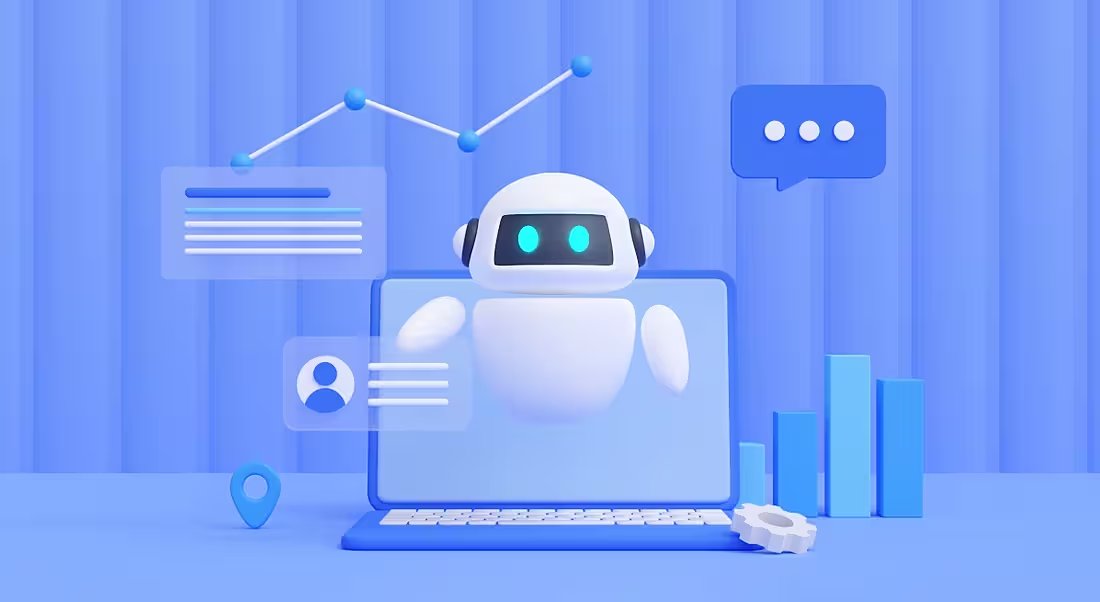What AI tools should you be using to ensure your job application makes an impact?
Employers and recruiters have been using AI to cherry pick and disregard job applications since the technology first became available.
But they aren’t the only ones who can leverage advanced technology to boost their chances of success. If you are thinking about incorporating AI into your job application process, but don’t know where to start, here are a few key areas to focus on.
Linkedln optimisation
LinkedIn is potentially first online documentation a potential employer will look at when considering your application. It is essentially your professional thumbprint, as it highlights your career, your skills and your ability to network with industry peers.
If your page is in any way sloppy or underdeveloped, it is unlikely that your application will succeed beyond this early phase.
ChatGPT can be an excellent resource, when used responsibly and sparingly. If you are having issues presenting yourself in a more polished manner, or you simply have too much information to work with, tailored prompts can help you construct and condense your heading and bio.
Chrome’s Careerflow.ai is a valuable extension that offers a number of free AI tools, designed for LinkedIn optimisation, such as profile scoring, personalised checklists for individual sections and an interactive wizard to aid understanding.
Applicants should also ensure that the image they select for their LinkedIn page portrays them in a professional light. If you don’t have any images of yourself that meet this criteria, you can use a website that will generate a headshot of you using the contextual images you share. Some of these sites are free, however, it is worth noting that the ones with higher ratings and improved quality tend to charge. But if you don’t have access to a photographer, or you have a smaller budget to work with, then there are options.
Automatic application
If you are studying, working full or part of the time, or simply busy, it can be difficult to stay on top of job advertisements in real time.
AI-powered software tools, such as LazyApply and Sonara take the information the applicant chooses to share, identifies skills and preferred positions, then automatically applies for jobs deemed to be a good match. LazyApply works only with LinkedIn and Indeed currently. Sonara is available only to people in the US.
En masse applications are not an exact science, relevancy is a spectrum and overlap will happen, but for people with hectic lives, it removes some of the labour involved in job hunting. Your main consideration should be ensuring your information is current and in line with your job expectations.
Interview prep
Preparing for an interview can be nerve-racking, particularly if you don’t have much experience or are not a natural public speaker. You want to be at your best, but that takes practice.
There has been much criticism on the topic of ChatGPT and how it is used, but a great example of how to ethically use it, is in the pre-interview process, to practise answering questions.
Candidates can prompt the application, with statements along the lines of ‘you are a hiring manager interviewing me for a software developer role, construct a mock interview on relevant industry topics and provide feedback on my answers’.
Interview Warmup, a free, global, AI-powered tool developed by Google, asks questions posed by industry experts, to which the user can verbally respond and see their answers transcribed and accompanied by AI-generated feedback. This is also useful as it indicates positive and negative patterns that may affect the overall interview.
Cover letter and CV generation
Job hunting can be a lengthy process and often, after you have curated the perfect cover letter, amended your CV to reflect your suitability for the job and followed up to reiterate your interest, all you hear are crickets.
As a recent survey has shown, ghosting during the application process is a serious, global issue and you may be left feeling as though all your efforts are a waste of your time.
If time is a factor, there are a range of AI tools that you can use to give you an edge in a saturated jobs market. ChatGPT for instance can be instructed to write a cover letter based on the advertised position, the necessary skills, the responsibilities of the role and other relevant criteria.
This can be done as often as required to reflect your interest in positions that transverse industries, leaving you time to focus on potential interviews and pre-employment skills building.
Whilst this is a useful resource please remember, that despite how it has been represented in movies and television, AI is not sentient, it is not infallible and it can lack character. Always proofread any content generated by AI. And it also helps to jump in and add a little bit of your own flair.
AI tools have the potential to be a great leveller in the working world, provided we wield the technology responsibly.
Find out how emerging tech trends are transforming tomorrow with our new podcast, Future Human: The Series. Listen now on Spotify, on Apple or wherever you get your podcasts.




